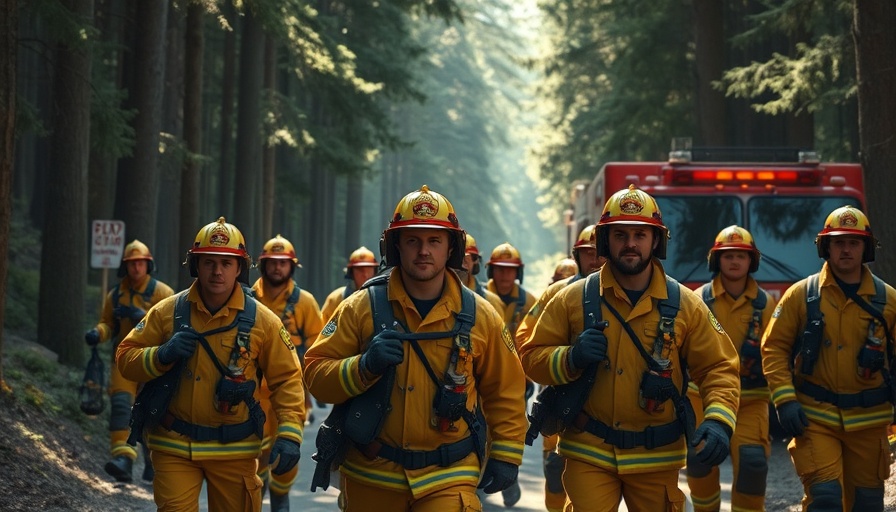
Understanding the Staffing Crisis in Wildfire Management
The firefighter shortage plaguing the United States is alarming, with a significant 26% of positions within the United States Forest Service (USFS) currently unfilled. As peak wildfire season approaches, the implications of this staffing crisis have become pressing. According to internal data reviewed by The Guardian, over 5,100 firefighting roles remain vacant as the nation grapples with over 41,000 wildfires reported this year alone.
Critical Voices Highlight the Dangers
USFS Chief Tom Schultz has guaranteed the public that the agency is "fully staffed," yet such assurances have been met with skepticism. A squad leader observed, “Maxing out 19-year-olds with no qualifications isn’t the best strategy,” highlighting the inexperience of current staff. Additionally, with some regions, such as the Pacific Northwest, encountering extreme wildfire risks, the shortage becomes a central concern for public safety.
Regional Challenges and Shortfalls
Data from July 17 indicated that the vacancy rate for USFS was as high as 39%, a staggering figure during a season marked by unusually high wildfire activity. The Intermountain region, filled with millions of forested acres in states like Nevada and Utah, faces individual shortages nearing 37%. Hence, during this critical period, fire crews are often forced to balance suppression efforts and administrative duties due to insufficient staff—resulting in fatigue and heightened risk for on-ground personnel.
Human Toll of the Ongoing Crisis
Reports from firefighters uncover the reality of operating without enough staff, leading to heightened danger and rising injuries. With many leadership positions vacant, the chance to implement qualified tactical planning diminishes significantly. A retired firefighter, Bobbie Scopa, added, “We can’t send [a crew] without supervision because it is unsafe.” This systemic gap jeopardizes both the effectiveness of firefighting efforts and the safety of those directly engaged in them.
The Emotional and Mental Burden on Firefighters
When understaffed, the remaining firefighters are compelled to endure extreme conditions with little recovery time. As one firefighter poignantly articulated, “Folks are having to fill in and fill holes.” They regularly push through fatigue, only to face treacherous fire lines amidst exhausting conditions. This raises concerns not only about the physical demand placed on them but also about their overall mental well-being amid such high-stakes situations.
Future Projections for Wildfire Management
The unfolding crises surrounding firefighter staffing emphasize the importance of building robust staffing strategies before future wildfire seasons. With climate change exacerbating wildfire risks, proactive measures are crucial. This might include investing in recruitment, training, and retaining experienced personnel to create a more resilient firefighting profile. Ignoring these pressing issues means risking an increase in wildfire damage and loss of life, making immediate action essential.
As this season shapes the future of fire management, it becomes imperative for decision-makers to assess and adapt strategies significantly. By addressing the current staffing challenges and enhancing support for those on the front lines, we can foster a more capable response to the wildfire crisis.
 Add Row
Add Row  Add
Add 




Write A Comment